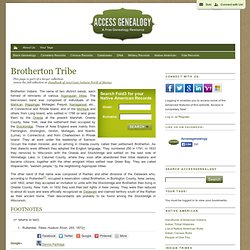

GET NJ - Images Of The Indians Of New Jersey. Advertise Online – SEO - Search Engine Optimization - Search Engine Marketing - SEM – Domains For Sale – George Washington Bridge Bike Path and Pedestrian Walkway – Corona Extra Beer Subliminal Advertising – Outlaw Motorcycle Gangs – Pet Care – – La Cosa Nostra – Jersey City Free Books Images Of The Indians Of New Jersey The Archeological Society Of New Jersey Portfolio Of Prints Series II Reproduced from original paintings and drawings by Monte Crews and Kenneth Phillips in the collection of the New Jersey State Museum During the hunting season parties of men, or sometimes whole families would use natural caves and rock shelters as temporary encampments.

Some of the meat was cooked and eaten on the spot, but the choice parts were usually smoked and taken home for future use. Men hunted singly or in groups during stated seasons. In shallow streams and rivers a weir was sometimes used in fishing. Baskets and mats were made of twisted fibers and splints. Global Call to Action Against Poverty (GCAP) — Global Call to Ac. The Smoking Gun. Bertie County, North Carolina Tuscarora History. Native American Home Pages - Nations. Tribal Connections in the Pacific Northwest - connecting American Indian/Alaska Native Communities to Health Resources on the Internet. Added 10/7/99ALGONQUIAN If you are looking for information on the "Algonquian Indians", you can stop right now. "Algonquian" is not the name of a Native tribe or nation; it is a language family, like "romance" or "indo-european".
There are no "Algonquian Indians"; but there are Algonquin Indians in Canada. There are dozens of North American Nations that speak Algonquian languages all across the United States and Canada, but the languages and their speakers are as different from each other as French and Spanish and Italian are. Most of the New England tribes spoke Algonquian languages, and many of the "Indian" words common in English today - such as raccoon, succotash, Massachusetts, moccasin, etc. - are from one or another of the Algonquian languages, such as Abenaki, Wampanoag, Nipmuc, Penboscot, Shawnee, Delaware, etc.
Poison's Icons - Web Graphics. Native American Language Net: Preserving and promoting indigenou. Native American Technology and Art. National Museum of the American Indian. Weaving in Beauty Home Page. C.W.'s Navajo Weaving Corner. Indians.org - Welcome . . . Native People of NJ - Lenni-Lenape. The Original People (Lenni-Lenape) inhabited New Jersey long before the Europeans arrived.

They were a people with a strong sense of tradition ( Lenape Wedding)and a well organized life-style. Unfortunately, they did not survive long after the arrival of the Europeans. Conflict between the cultures led to hostile wars. The European need to own the land and the diseases, guns and alcohol they brought with them created an impossible situation for the survival of the Lenni-Lenape in their homeland. The life-style was strange to the Europeans, but was based on adaptation to the environment of New Jersey.
The Lenni-Lenape were part of the Algonquin nation. The Lenni-Lenape were organized into three subtribes: In the North, were the Minsi "the people of the stony country" In the Central area, were the Unami "the people down the river" In the South, were the Unilachtigo "the people who lived near the ocean" Contact with the "whites" was sporadic until the early 1600's. Read more about Rev. Search Results. Brotherton Indian History. Brotherton Indians.

The name of two distinct bands, each formed of remnants of various Algonquian tribes. The best-known band was composed of individuals of the Mahican, Wappinger, Mohegan, Pequot, Narraganset, etc., of Connecticut and Rhode Island, and of the Montauk and others from Long Island, who settled in 1788 on land given them by the Oneida at the present Marshall, Oneida County, New York, near the settlement then occupied by the Stockbridge. Those of New England were mainly from Farmington, Stonington, Groton, Mohegan, and Niantic (Lyme), in Connecticut, and from Charlestown in Rhode Island. They all went under the leadership of Samson Occum the Indian minister, and on arriving in Oneida county called their settlement Brotherton.
As their dialects were different they adopted the English language. MLA Source Citation: Hodge, Frederick Webb, Compiler. Our "rules" are simple.